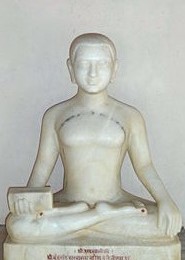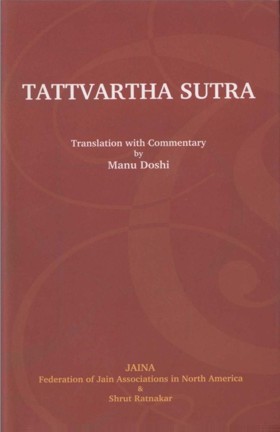Dedicated
to
every truth seeker in the world
- Manu Doshi
Tattvartha Sutra is the only composition acceptable to all the Jains. Shwetāmbars regard it with high sanctity, while Digambars treat it as an Agam. It is composed in handy phrases, which are easy to understand. It is a short Sanskrit text of 344 (357 as per Digambar version) Sutras, which can be covered in 20 pages and can be easily memoriz.ed. As such, it finds a place on academic curriculum. There are minor differences between Shwetambar and Digambar texts, but overall text remains common. In view of its importance several learned scholars have prepared detailed commentaries thereon.
Its author is known as a Poorvavid in Shwetambar tradition and Shrutkevalideshiya in Digambar tradition. He has included almost everything that Jainism has to convey. His handling is superb and Sutras have been presented as if they naturally occurred to him. Shwetāmbars consider him as belonging to their tradition on the basis of Tattvārthabhāshya, while Digambars contend that he was a Digambar monk.
The exact time of the composition is not known, but it could have been composed during the first or second century CE prior to split between Shwetāmbars and Digambars.
Emphasis of spiritual science is on misery and unhappiness in worldly life, which arises from interaction of soul with lifeless matter. That relates to the present activities as well as to the interactive field that such activities generate. That field is shaped by our intentions, motives, desires and the drive with which we conduct our activities. That interactive field thus holds keys to our present status and molds the future. Objective of Tattvārtha Sūtra is to show how to get free from it. For that purpose it defines every term and shows how the interaction takes place, how that can be prevented and worldly bondage can be eradicated.
 Acharya Umaswati
Acharya Umaswati
